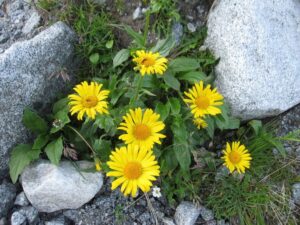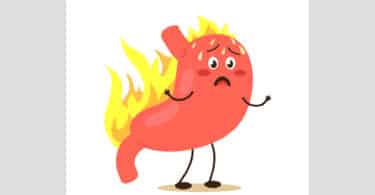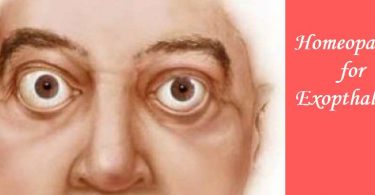Are you looking for a homeopathic treatment for haemorrhage? This article discusses the homeopathy treatment of haemorrhage along with the best homeopathic medicine for haemorrhage treatment.
Escape of blood from any damaged ruptured blood vessel is known as hemorrhage.
Classification of the hemorrhage
Depending upon the nature of vessel involved:
- Arterial hemorrhage – bright red in color, jets out. Pulsation of the artery can be seen. It can be easily controlled as it is visible.
- Venous hemorrhage – dark red in color, never jets out but oozes out, difficult to control because veins get retracted, non pulsatile
- Capillary hemorrhage – red color, never jets out, slowly oozes out. It becomes significant if there are bleeding tendencies.
Depending on the timing of the hemorrhage:
- Primary hemorrhage: occurs at the time of surgery
- Reactionary hemorrhage: occurs after 6-12 hours of surgery. Hypertension in postoperative period, violent sneezing, coughing or retching, are the usual cause.
- Secondary hemorrhage: occurs after 5- 7 days after surgery. It is due to infection which eats away the suture material, causing sloughing of vessels wall.
Depending on the duration of hemorrhage:
- Acute hemorrhage: occurs suddenly, e.g. esophageal variceal bleeding due to portal hypertension.
- Chronic hemorrhage: occurs over a period of time. E.g. hemorrhoids /piles or chronic duodenal ulcers. Tuberculous ulcer of the ileum, diverticular disease (Homeopathy Treatment for Diverticular) of the colon.
Depending on the nature of bleeding:
- External hemorrhage: revealed haemorrhage e.g. epis taxis haematemesis.
- Internal hemorrhage: conceled hemorrhage e.g. splenic rupture following injury, ruptured ectopic gestation, liver laceration following injury.
Classes of Hemorrhage
Hemorrhaging is broken down into four classes by the American College of Surgeons’ advanced trauma life support (ATLS).
- Class I Hemorrhage involves up to 15% of blood volume. There is typically no change in vital signs and fluid resuscitation is not usually necessary.
- Class II Hemorrhage involves 15-30% of total blood volume. A patient is often tachycardic (rapid heart beat) with a reduction in the difference between the systolic and diastolic blood pressures. The body attempts to compensate with peripheral vasoconstriction. Skin may start to look pale and be cool to the touch. The patient may exhibit slight changes in behavior. Volume resuscitation with crystalloids (Saline solution or Lactated Ringer’s solution) is all that is typically required. Blood transfusion is not usually required.
- Class III Hemorrhage involves loss of 30-40% of circulating blood volume. The patient’s blood pressure drops, the heart rate increases, peripheral hypoperfusion (shock) with diminished capillary refill occurs, and the mental status worsens. Fluid resuscitation with crystalloid and blood transfusion are usually necessary.
- Class IV Hemorrhage involves loss of >40% of circulating blood volume. The limit of the body’s compensation is reached and aggressive resuscitation is required to prevent death
Homeopathic treatment of hemorrhage
Homeopathy is one of the most popular holistic systems of medicine. The selection of homeopathic medicine for haemorrhage is based upon the theory of individualization and symptoms similarity by using holistic approach. This is the only way through which a state of complete health can be regained by removing all the sign and symptoms from which the patient is suffering. The aim of homeopathic medicine for haemorrhage is not only to treat hemorrhage but to address its underlying cause and individual susceptibility. As far as therapeutic medication is concerned, several remedies are available to treat hemorrhage that can be selected on the basis of cause, sensations and modalities of the complaints. For individualized remedy selection and treatment, the patient should consult a qualified homeopathic doctor in person. There are following remedies which are helpful in the treatment of hemorrhage:
Carbo veg – continuous passive hemorrhage, patient wants to be fanned; skin cool and bluish, pulse rapid and weak’ hemorrhages of a low type, blood changed in its composition, dark and rather fluid; lack of animal heat; anguish of heart.
Aconite – Acute haemorrhages call for Aconite when there is anxiety and fever, and a profuse bright red flow. Millefolium has the same bright red flow, but no anxiety or fever, and this remedy is most useful in active hemorrhages from the nose, lungs, or bowels of mechanical origin; epistaxis. It is a more active haemorrhage than that requiring Hamamelis. It also corresponds to haemorrhages in typhoid fever with tympanitis.
Ferrum – homeopathic medicine for haemorrhage of bright red blood, often mixed with coagula, associated with a great deal of flushing, rapid and a little labored breathing, pulse increased in frequency and strength. After severe loss of blood; pale, bloated appearance, skin cool and pitting on pressure, particularly about joints.
Bovista – Bovista produces a relaxation of the entire capillary system which, of course, favors haemorrhage. It is, therefore, useful in epistaxis, and in uterine haemorrhage when the uterus is engorged ; it flows between the menstrual periods from any little over-exertion. Farrington gives as characteristic that the flow occurs chiefly or only at night or early in the morning. The surface of the body is puffy
Lachesis – homeopathic medicine for haemorrhage from uterus, bowels, nose, stomach, lungs, or at the bottom of the ulcer; always when blood can be discerned like black straws as a sediment; often used in typhoid when hemorrhage occurs.
Phosphorous – blood-spitting with dry, tight, fatiguing cough, inter mixed with expectoration of mucus. Profuse hemorrhages, pouring out freely, then ceasing for some time, or the scanty discharge alternates with the profuse one, causing anemia and great debility.
Sulphuric acid – blood dark and profuse from lungs, especially in consumptives and broken-down constitutions, during or after adynamic diseases, from scorbutic or alcoholic affections.
Crot. H. – haemorrhagic diathesis, hemorrhage from every orifice, from nose, mouth, ears, anus, vagina, uterus, bowels, lungs, and from all mucus membranes. Intraocular hemorrhage; all discharges are bloody, even sweat and saliva are bloody.
Purpura haemorrhagica, comes on suddenly, from all orifices, skin, nails and gums. Blood is dark, fluid and non coaguable; hemorrhage occurring in typical zymotic disease.
Ammonium Carb – Haemorrhagic diathesis, bleeding of black, fluid blood, that will not coagulate. The blood is dark, acrid showing that great disturbance is taking place in circulation. Degeneration of red blood corpuscles; bleeding from the nose, the uterus, the bladder and the bowels; nose bleed when washing the face in the morning,
Haemorrhagic diathesis in weak, anamemic and delicate women who must have the smelling bottle continually at hand who catch cold easily in winters. Complaints are mainly right sided.
Arnica Montana – generally the first choice for bleeding caused by an injury, especially when shock Is associated

Arnica montana
with the bleeding. The body parts feel bruised, arnica is often used for a nosebleed in a growing child. Often, this is the first remedy given for bleeding that results from soft tissue damage of any body part.
China – useful for bleeding characterized by dark, clotted blood from any orifice of the body, there is ringing in the ears and the feeling that the person will faint. The person wants to be fanned. This problem is often associated with bleeding after childbirth.
Kali Mur – useful for bleeding when the blood tends to be thick, clotted, and often mixed with mucus. Common symptoms include vomiting of dark, clotted blood from the stomach and nosebleeds that get worse in the afternoon.
Veratrum album – homeopathic medicine for haemorrhage usually associated with intestinal hemorrhage, especially when there is profuse diarrhoea that contains blood.
Secale cor – This remedy corresponds to passive, painless, dark, offensive haemorrhages in thin scrawny women with formication and tingling in the limbs , surface of body cold and desire to be uncovered. It is characterized by slow oozing, dark, thin and persistent and worse from motion.
Belladonna – loss of bright red blood occurs which clots easily. Head is hot and face is red.
Hamamelis – Dr.Dyce Brown considers Hamamelis one of the best remedies for uterine haemorrhages generally
Trillium – There is no better remedy in active and passive haemorrhages than Trillium. Drs. Hale and Burt believes that it excels Sabina, Secale and Hamamelis. Cartier advises its use in nosebleed. It is especially suitable for bright red or dark and clotted flow in women who flow after every labor. There is a faint feeling at the epigastrium, coldness of the extremities and feeble pulse. Acute haemorrhages, haemorrhages from fibroids or after violent exertions. The tincture on cotton applied to the part is most useful to arrest bleeding from the teeth, or for epistaxis, especially epistaxis in growing children. The characteristic in uterine haemorrhages is a sensations as if the thighs would separate, relieved by a tight bandage around the body.
Sabina – Bright red clotted flow, worse from motion, is characteristic of Sabina, with pains extending from the pubes to the sacrum and down the thighs. It is especially useful in protracted uterine haemorrhages and after abortion or parturition. These are painful labor-like drawing pains in the abdomen. Erigeron is similar, but associated with irritation of the bladder and rectum, the flow comes in fits and starts, a sudden gush, then a stop; a lumpy dark flow. Some physicians consider Erigeron almost specific in all forms of haemorrhage. Exhausting attacks of haemorrhages at the menopause are often checked by Erigeron. After miscarriage it is also of great use, here the haemorrhages is bright red in color.
Haemorrhage Cases Cured with Homeopathic Medicine
Pontine and Brain Stem Haemorrhage in Coma – by Leela D’Souza
A Case of Purpura Haemorrhagica – by George Heinrich Gottlieb Jahr






good
can have more informatin
Kindly shed some light of ‘Ficus indica’